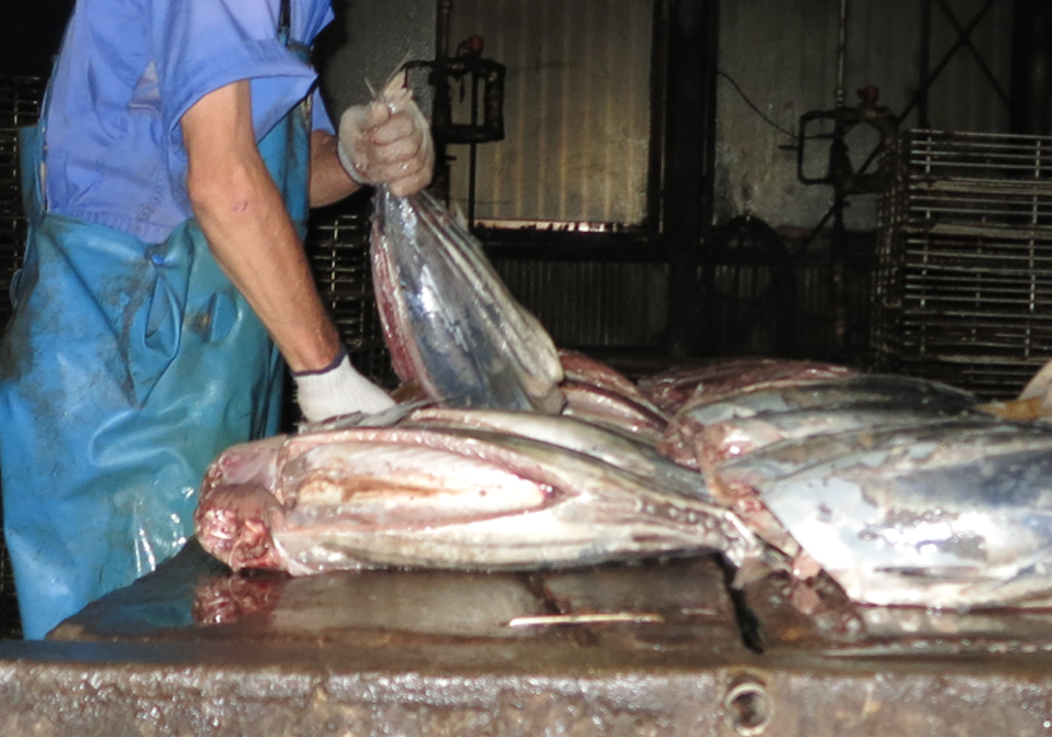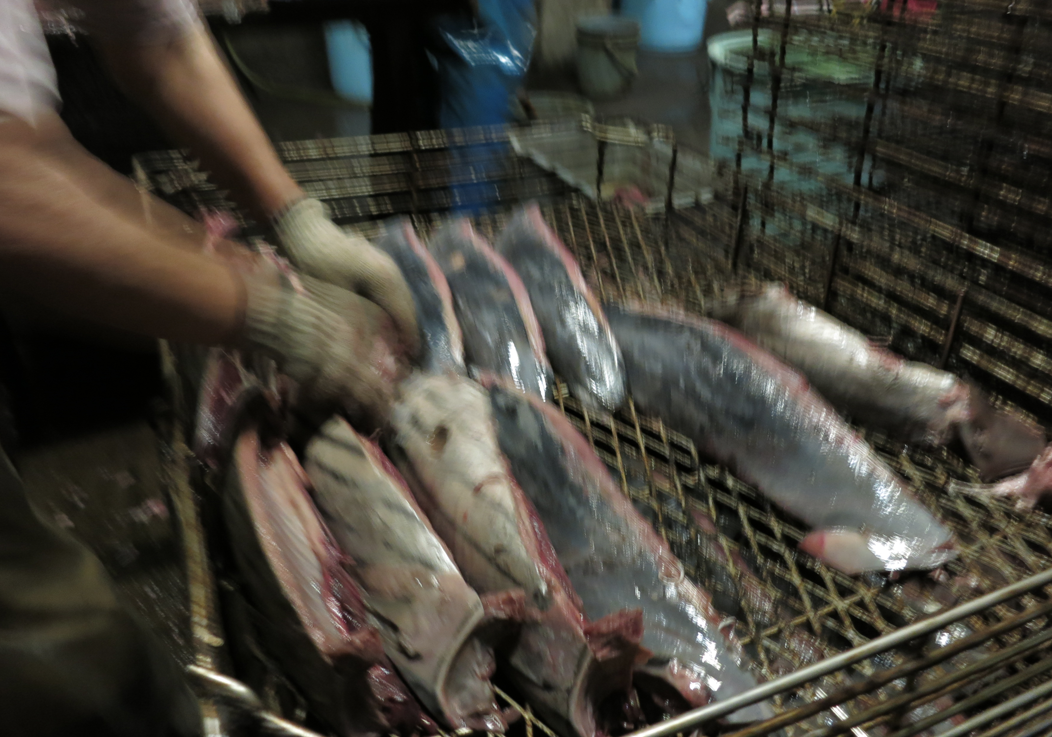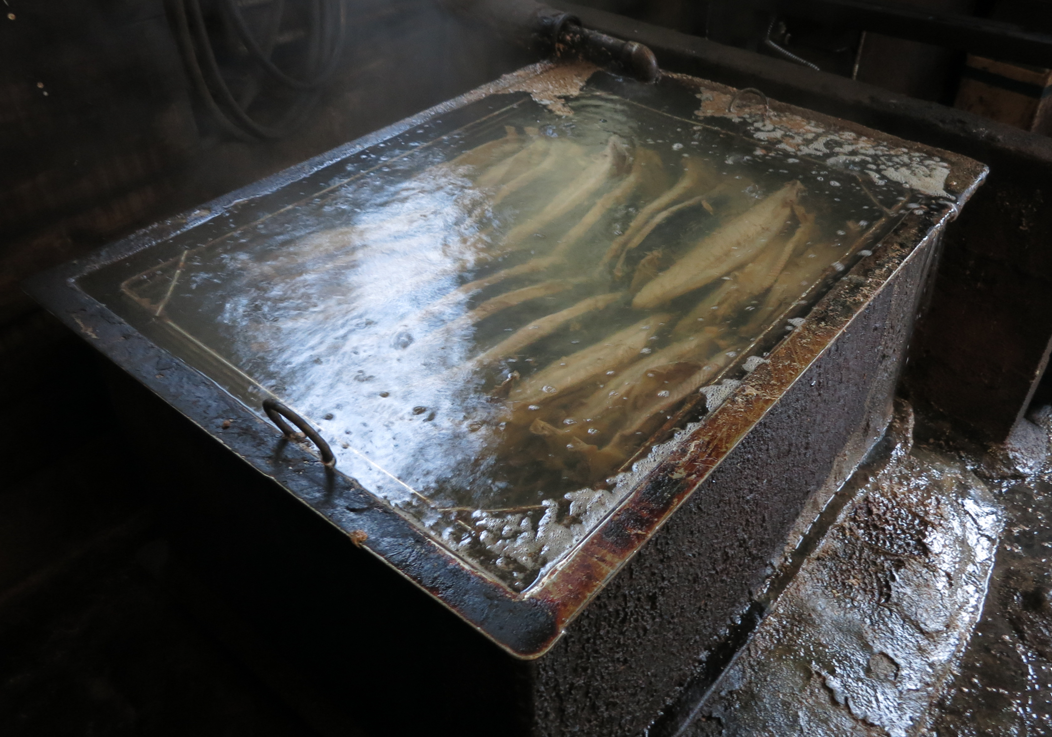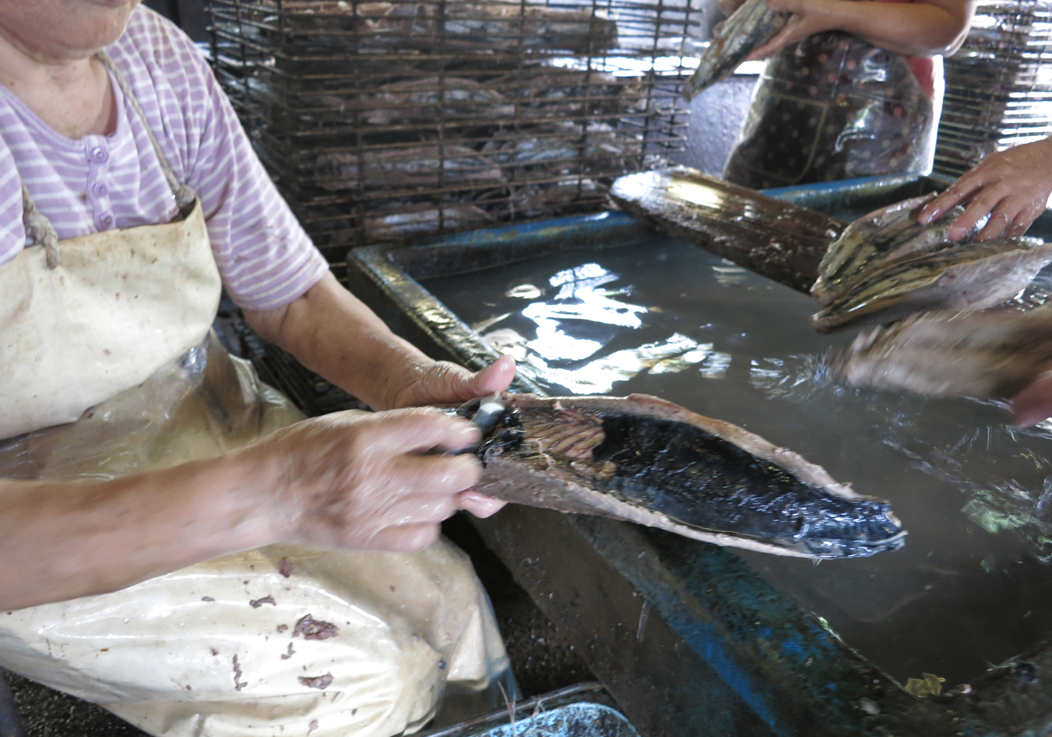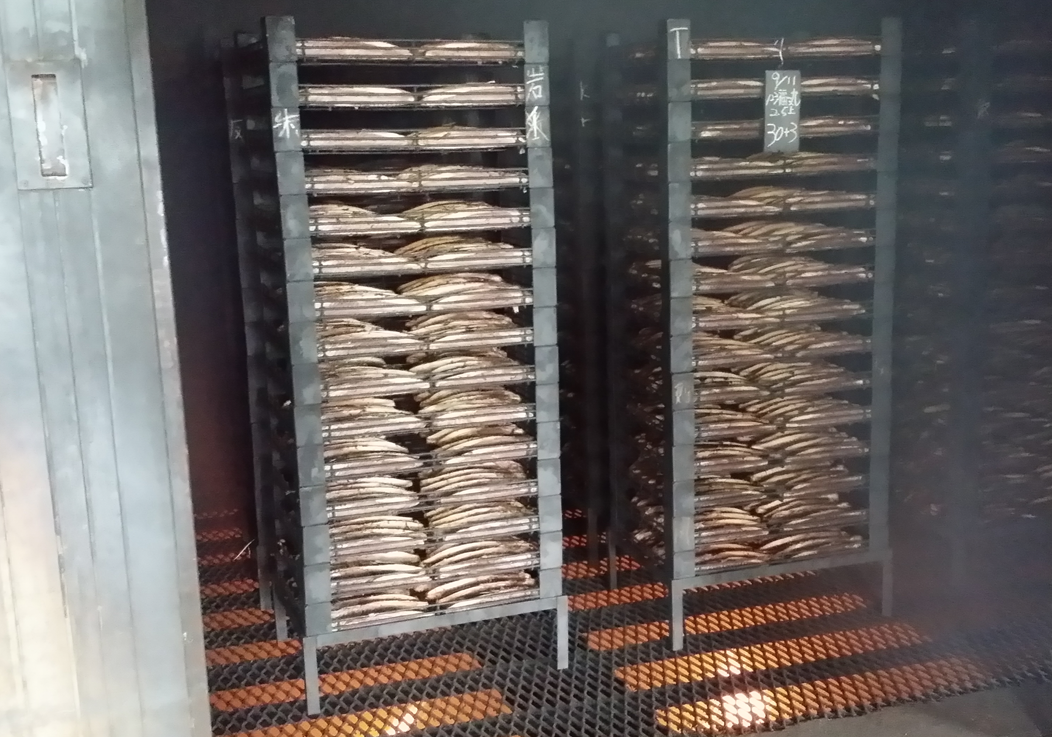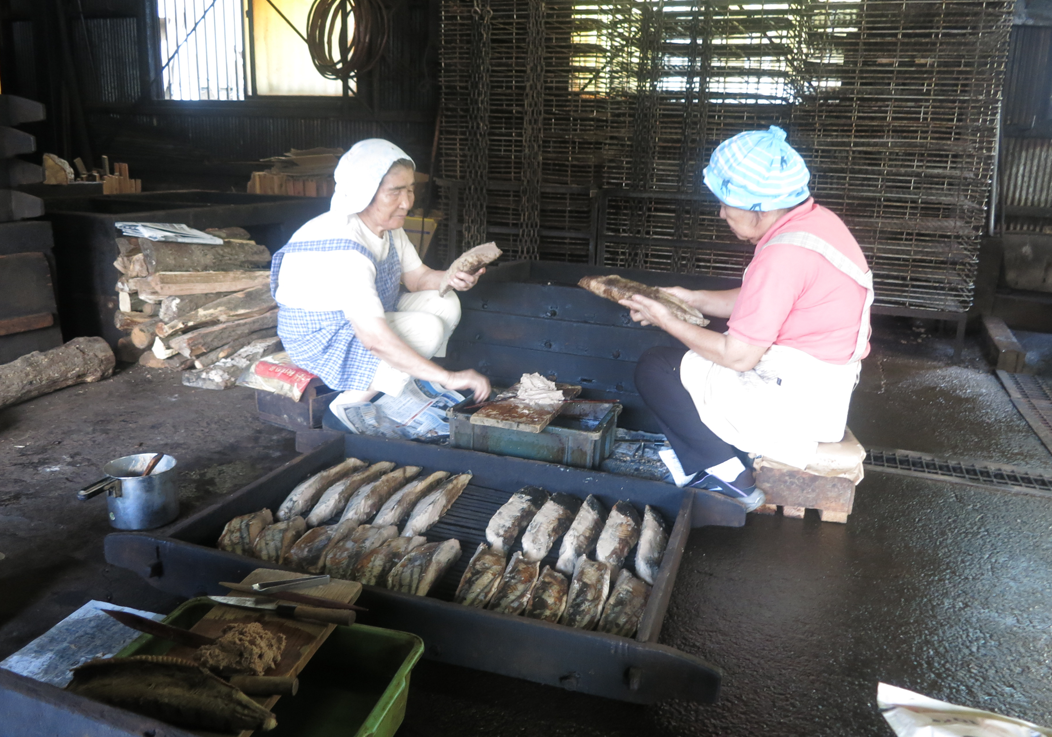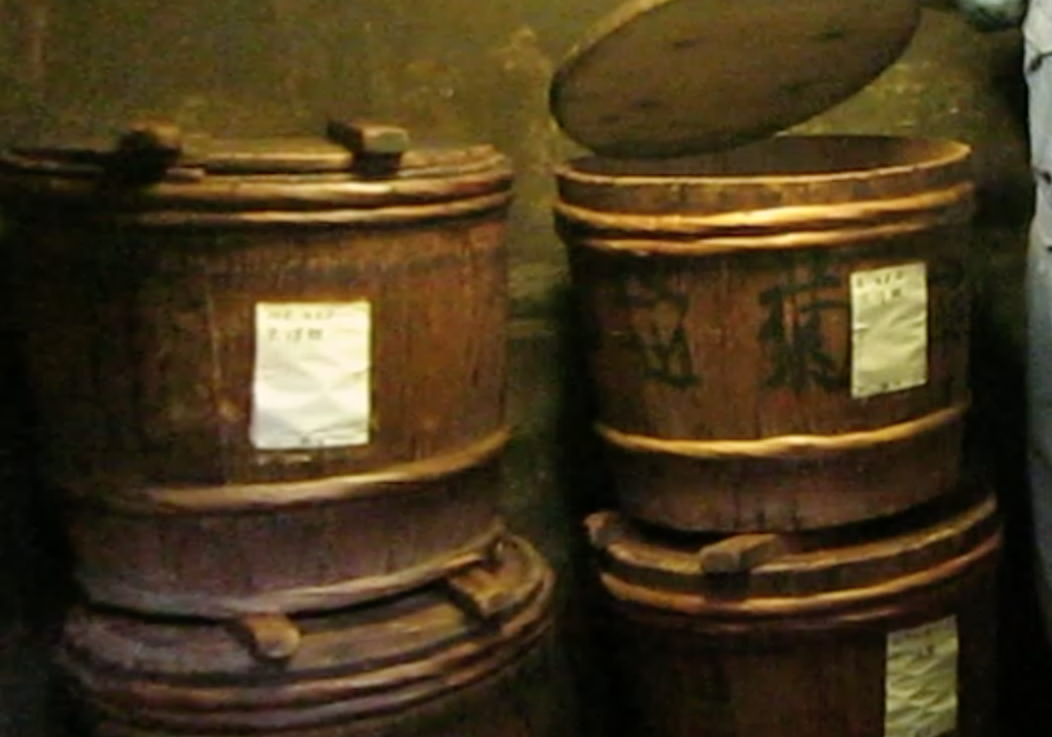It takes about four months to make a block of katsuobushi through the astonishingly labor-intensive and unthinkably time-consuming steps of the traditional process. We followed the process, from landing a skipjack tuna to serving a dish on a kitchen table. We were shocked to learn that virtually every step is done by hand. Who would have thought this everyday staple had such a long journey to our kitchens?
Katsuobushi Production Process
1. Landing
Skipjack tuna fishing starts around March. Skipjack tuna regularly travels north from the south of Kyushu up to Tohoku, and then back down to Kyushu again. The catch in the local seas has decreased in recent years, causing Japanese fishing boats to go as far south as the waters near Malaysia.
2. Filleting
A skipjack tuna is filleted, then further divided into the back side and the belly side. This yields 4 fillets (2 back fillets and 2 belly fillets) out of one fish.
3. Arranging
The fillets are neatly arranged in a specially designed basket, as preparation for the subsequent simmering step. Care is taken to preserve the shape.
4. Simmering
The fillets are then simmered, just under boiling, for an extended period of time. This tightens the flesh, removes any fishy odor and helps create high-quality katsuobushi with an abundance of umami (savory taste) elements.
6. Smoking and drying
The fillets are then smoked repeatedly to remove moisture and add even more flavor.
8. More smoking
Moisture is further removed.
9. Grinding
After sun-drying for about half a day, the surface is ground. This helps mold to develop faster in the subsequent step.
10. Ripening
The fillets are sprayed with a special strain of mold for katsuobushi and placed in a closed cultivation room. In summer, mold develops in about 6 to 10 days.
11. Sun-drying
The fillets are arranged on straw mats and left to dry in the sun. Steps 10 and 11 are repeated 3 to 6 times to further reduce moisture.
12. Finally complete!
After about four months, the katsuobushi is complete. Blocks of katsuobushi are shipped to wholesalers, and from there they reach people’s kitchens.




